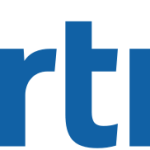- 産業: Consulting
- Number of terms: 1807
- Number of blossaries: 2
- Company Profile:
Gartner delivers technology research to global technology business leaders to make informed decisions on key initiatives.
The process of converting the production plan or the master production schedule into the impact on key resources, e.g., man hours, machine hours, storage, standard cost dollars, shipping dollars and inventory levels.
Industry:Technology
Requirements definition and management (RDM) tools streamline development teams’ analysis of requirements, capture requirements in a database-based tool to enable collaborative review for accuracy and completeness, ease use-case and/or test-case creation, provide traceability, and facilitate documentation and versioning/change control. Increasingly, RDM tools support business analysts with graphical tools for process workflow definition, application simulation and prototyping, and other visual, collaborative tools. The database approach uses special-purpose repositories that are part of the requirements management solution or ship with a general-purpose commercial database integrated with the tool.
Industry:Technology
A facility for storing descriptions and behaviors of objects in an enterprise, including requirements, policies, processes, data, software libraries, projects, platforms and personnel, with the potential of supporting both software development and operations management. As a single point of definition for all system resources, it should stimulate both program and installation management productivity. A system repository would include configuration definitions, tuning parameters and performance goals, while an application repository would include data definitions.
Industry:Technology
Replicable, integrated solutions to a specific process improvement or application requirement. A repeatable solution typically exhibits the following characteristics:
• Fixed pricing, sometimes with a shared business-benefit upside.
• Fixed delivery schedule with rapid implementation.
• Specified performance.
• Initial pilot solution with rapid prototype, followed by roll-out and incremental additions.
• A prime contractor with one point of contact for the client.
• Long-standing and battle-proven partner relationships.
• Joint research and development (R&D) and joint marketing among the partners.
• Opportunity for residual values in the form of royalties, licensing, etc.
Repeatable solutions, as the basis for the portfolio of technology solutions (POTS), must be targeted at specific processes, technologies, subindustries or topical issues. They require high-end professional services such as business process re-engineering, system and network integration and software customization.
Industry:Technology
Introduced by the CDMA Development Group (CDG) and the 3GPP2, an R-UIM card is a smart card for use with CDMA-based mobile phones. It enables customers to switch phones without changing their mobile numbers, stores frequently called numbers and provides some functions similar to the SIM card in GSM mobile phones.
Industry:Technology
Data cards and USB modems that provide wireless broadband connections to notebook computers and other mobile computing equipment.
Industry:Technology
Remote diagnostic technologies provide the ability to deliver onboard vehicle-related performance and quality data to a central monitoring application for the purpose of improving parts performance and reliability insights for engineering and product development. Remote diagnostics can also improve customer relationship management by automating repair and service scheduling.
Industry:Technology
A reference to a product’s quality, availability of optional features, and ease of diagnosis and repair.
Industry:Technology
A staff member who acts as an organizational liaison, typically between an information services (IS) department and business-unit or function. The relationship manager may fulfill a combination of roles that correspond to the degree of trust and authority granted to the person in that role by his/her customer. The job content of the position (in order of increasing business trust and responsibility) is classified in four levels:
• Level 1: Inform and Communicate
• Level 2: Advise and Influence
• Level 3: Coordinate and Integrate
• Level 4: Manage and Oversee
Relationship management is essentially a matrixed position, with reporting requirements to at least two managers (typically a chief information officer — CIO — and business function or division manager). In practice, however, the position is usually linked more strongly to one side than another, and is most often aligned to the business management side.
Industry:Technology
A relational approach to multidimensionality, offering multidimensional operations (initially read only) on top of relational data (heavily denormalized).
Industry:Technology
